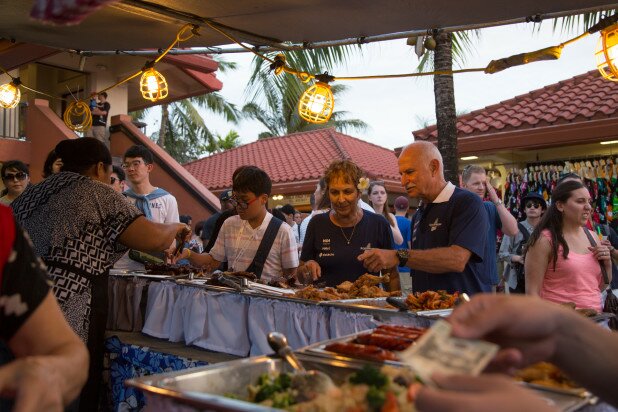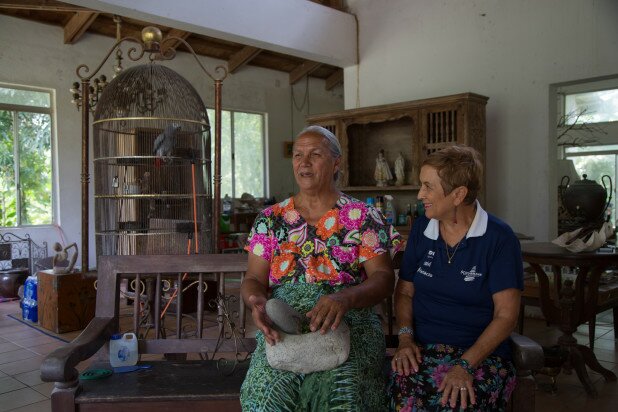
A mix of cultures

Looking for points?
(Português) Responda corretamente à pergunta ao final desta página e ganhe pontos no Game Oriente
As the West Fayu atoll got distant from us, our days as Robinson Crusoe were over.
High waves, and hectic sea and fast winds made SY Kat fly, which made us arrive in Guam in three days.
We had been here in 1999, during the Magalhães Global Adventure, our second round trip. But this time, I was impressed by how Guam had grown: a word of lights, people on the street, shopping malls, a lot of traffic and tall buildings.
What caught our attention the most was the amount of Japanese people on the streets. Guam is within a 2-hour flight from Japan and has become a major vacation destination for them. Most of the street signs are written both in Japanese and English.
But the beaches with white sand, turquoise sea and endless coconut trees turn the island into a true paradise.
Leaving town for 20 minutes, we find the calm places where the natives chamorro live. They are very friendly with visitors.
Guam was firstly visited by Ferdinand of Magellan, in 1521, then under the command of the Spanish Crown.
The island was settled by the Spaniards, and we notice many Spanish-derived words in the chamorro language. Along the years, Guam was also occupied by the Germans, Japanese and after by the US, around 1944.
And we were very happy to meet our chamorro friend, a History and Local Culture teacher, Tony Ramirez, who took us to visit several parts of the island in order to learn about the legends, culture and local habits.
Guam is an unincorporated territory and remains a strategic military post. The American influence is evident in stores and restaurant chains. The local culture has also been influenced and enriched by new immigrants, coming from the Philippines, Japan, Korea, China and Micronesia.
A true cultural mix.


